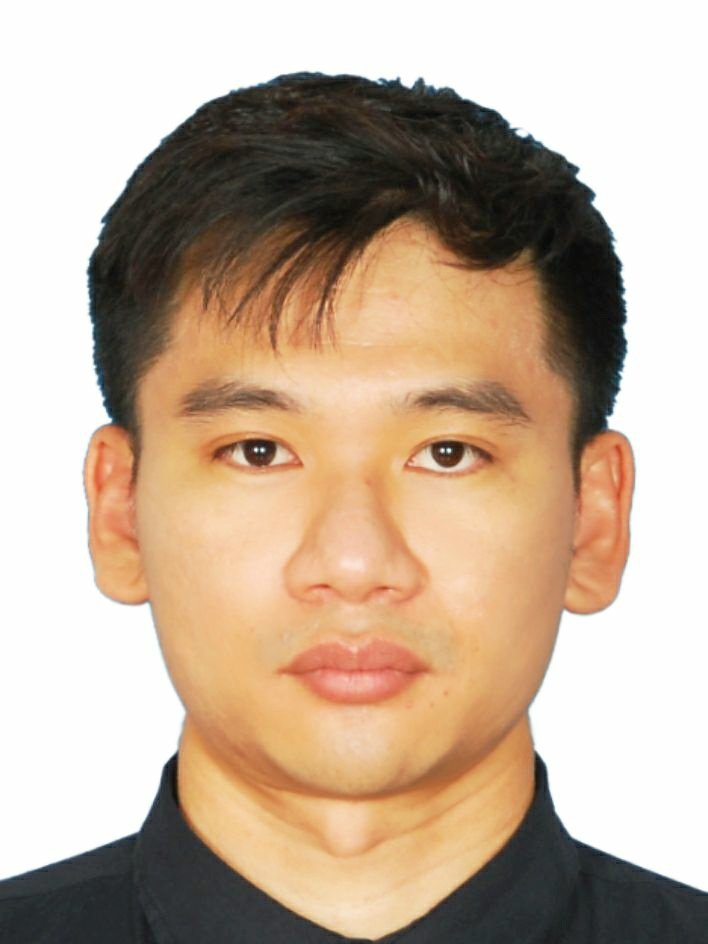Contact

| Department of Civil Engineering
International University, Vietnam National University HCMC
Linh Trung Ward, Thu Duc District, Ho Chi Minh City, Vietnam.
Email: nbqvinh@hcmiu.edu.vn |
Qualifications
PhD in Geotechnical Engineering, Pukyong National University- Korea, 2021
MEng, Ho Chi Minh city University of Technology - Vietnam National University HCMC, 2015
BEng, Ho Chi Minh city University of Technology - Vietnam National University HCMC, 2013
Research interests:
Landslide risk assessment
Probabilistic risk analysis
Hazard analysis
Vulnerability analysis
Debris-flow simulation and experiment
Machine learning
Image processing
Landslide detection using remote sensing
Numerical simulation in Geotechnical
Research projects
1. Development of landslide physical vulnerability assessment techniques considering hazard level-based rainfalls (Supported by National Research Foundation of Korea (NRF)) (2018-2021). Role: Researcher.
2. Susceptibility and vulnerability assessments of rainfall-earthquake induced multi hazard (Supported by the Korea Institute of Energy Technology Evaluation and Planning (KETEP) and the Ministry of Trade, Industry & Energy (MOTIE)) (2017-2021). Role: Researcher.
3. Development of debris flow disaster prevention technology based on big data analysis and unmanned aerial vehicle (Supported by National Research Foundation of Korea (NRF)) (2017-2021). Role: Researcher.
Publications
Peer-review journal papers:
1. Nguyen, V. B. Q., Kang, H. S., & Kim, Y. T. (2018). Effect of clay fraction and water content on rheological properties of sand–clay mixtures. Environmental earth sciences, 77(16), 576. (IF=2.784)
2. Nguyen, V. B. Q., & Kim, Y. T. (2019). Rainfall-Earthquake-Induced Landslide Hazard Prediction by Monte Carlo Simulation: A Case Study of MT. Umyeon in Korea. KSCE Journal of Civil Engineering, 1-14. (IF=1.805)
3. Nguyen, B. Q. V., Lee, S. R., & Kim, Y. T. (2020). Spatial probability assessment of landslide considering increases in pore-water pressure during rainfall and earthquakes: Case studies at Atsuma and Mt. Umyeon. CATENA, 104317. (IF=5.198)
4. Nguyen, B. Q. V., & Kim, Y. T. (2021). Regional scale landslide risk assessment in Mt. Umyeon, Korea using risk index estimation. Landslides, 1-18. (IF=6.578)
5. Nguyen, B. Q. V., & Kim, Y. T. (2021). Spatial Probability Prediction for Landslide: a Comparative Assessment of The Performance of Naïve Bayes, Ensemble Learning and Deep Learning. Bulletin of Engineering Geology and the Environment, 80(6), 4291-4321. (IF=4.298)
6. Nguyen, B. Q. V. (2021). Probabilistic Model for Predicting Volume of Debris Flow Based on Catchment Area and Channel Length. Bulletin of Nepal Hydrogeological Association.
International Proceeding Conferences
1. Nguyen, B. Q. V., Lee, J. S., Kim, Y. T., Lee, S. R., & Kwon, T. H. (2019). Effect of rheological properties on debris-flow intensity and deposition in large scale flume experiment. In Association of Environmental and Engineering Geologists; special publication 28. Colorado School of Mines. Arthur Lakes Library.
International Conferences
1. Nguyen, V. B. Q., Kang, H. S., & Kim, Y. T. (2016). Characteristics of Rheological Properties of Sand with Various Clay Fraction. The 15th International Conference on Civil and Environmental Engineering, Japan.
2. Nguyen, V. B. Q. & Kim, Y. T. (2017). Empirical Model Predict Volume of Debris Flow from Catchment Area and Channel Length Based on Probabilistic Method. The 16th International Conference on Civil and Environmental Engineering, Taiwan.
3. Nguyen, V. B. Q. & Kim, Y. T. (2018). Annual Landslide Hazard Assessment Based on Rainfall Threshold: Study Case Mt. Umyeon, Korea. The 17th International Conference on Civil and Environmental Engineering, China.
4. Kim, Y. T., Nguyen, V. B. Q., Pradhan, A. M. S, & Lee, J. S. (2018). Landslide Susceptibility Assessment Considering Rainfall and Earthquake Using Ensemble Model. 2018 PRIMO Conference Technology and Disaster Risk Reduction, Hawaii.
5. Nguyen, V. B. Q., Kim, Y. T., Lee, J. S., & Yun, D. H. (2019). Effect of yield stress and viscosity on debris flow behaviors by flume experiment. EGU General Assembly 2019, Austria.
6. Nguyen, V. B. Q., Lee, J. S., Kim, Y. T., Lee, S. R., & Kwon, T. H. (2019). Effect of rheological properties on debris-flow intensity and deposition in large scale flume experiment. 7th International Conference on Debris-Flow Hazards Mitigation, USA.
7. Nguyen, V. B. Q., Lee, J. S., Lee, S. R., & Kim, Y. T. (2019). Landslide Susceptibility Assessment Considering Pore-water Pressure Increases due to Rainfall and Earthquake. 12th ARC of IAEG, Jeju, Korea.
8. Nguyen, V. B. Q., Lee, S. R., & Kim, Y. T. (2019). Spatial Probability Prediction for Landslide Using Convolutional Neural Network, Case Studies: Atsuma, Japan and Mt. Umyeon, Korea. 2019 Korea-Japan-Taiwan Joint Geoscience Symposium, Busan, Korea.
9. Nguyen, V. B. Q., & Kim, Y. T. (2019). Considering Increases in Pore-Water Pressure in Assessment of Landslide Susceptibility Triggered by Rainfall and Earthquake. The 18th International Conference on Civil and Environmental Engineering, Korea.
10. Nguyen, V. B. Q., Lee, S. R., & Kim, Y. T. (2020). A Novel Framework for Landslide Risk Assessment in Mt. Umyeon, Korea. EGU General Assembly 2020, Austria.
11. Nguyen, V. B. Q., & Kim, Y. T. (2020). Rainfall-Earthquake-Induced Landslide Assessment Using a Deep Neural Networks. KSCE 2020 Convention Conference & Civil Expo, Jeju, Korea.